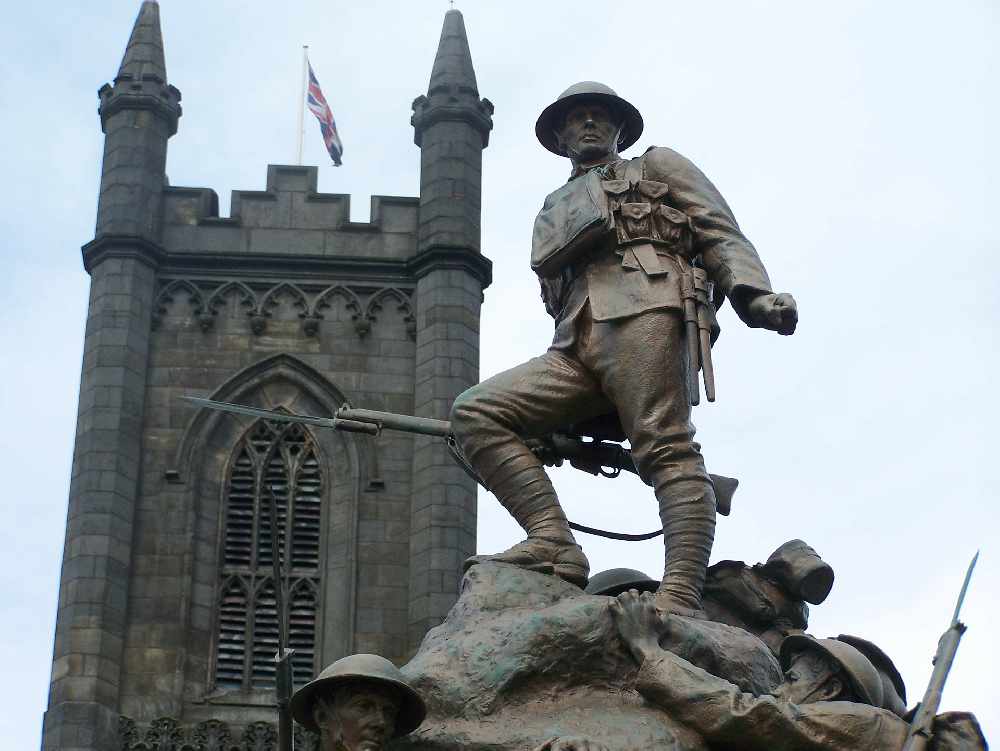You might not think there’s much to be said when talking about the history of Oldham. You might be of the opinion that the other towns and villages surrounding our borough are far more interesting with a more wide-ranging history
But if we dig a little deeper than the surface, there’s plenty to be found in the history of Oldham that makes for interesting reading and research.
From its earliest days with very few records of note, to the “boom” experienced during the rise of the cotton trade and beyond, there’s a lot of ground to cover.
With this in mind, here are just a few things you might not know about the history of Oldham:
Mill Town
Starting out with the most obvious point – or, at the very least, the most prominent – Oldham is famed for having taken full advantage of the cotton trade explosion in the late eighteenth/early nineteenth century.
Before this, Oldham was experiencing some success in the form of local cloth and textile production. But this was nothing in comparison to the gigantic shift the cotton trade would contribute to the area and the history of Oldham as a whole.
Actually, this success transformed Oldham from a town with little or no influence on the global stage, to becoming recognised as an international central hub of cotton spinning in the latter half of the nineteenth century.
A whopping third of Oldham’s population was employed to work in the cotton trade in some way, shape or form, as compared to a mere five percent in the rest of the UK.
In the 1860’s and 1870’s multiple mills sprang up across the area, resulting in Oldham becoming the most dominant force of mass cotton production in the area and, in fact, the world.
By the time Oldham reached 1911, the town was home to around one in four cotton spindles in the country and a staggering one in ten spindles globally.
These mills operated both night and day and provided massive local employment in an area which had historically struggled with jobs.
While the sharp decline of the cotton trade into the twentieth century caused serious problems for the town, many of these mills have been reconditioned and still stand as monuments to more prosperous times gone by to this day.
Engineering
As you can imagine, the growing cotton trade in Oldham brought with it great opportunity in the manufacture and sales of cotton spinning and weaving technology.
The Platt Brothers, who became essential in the success of the cotton industry in Oldham, developed and revolutionized machines in cotton spinning and manufacture, eventually becoming the largest manufacturers of their kind in the world.
Originally from Dobcross, the Platt family at one point employed over fifteen thousand people in their business, which gives you some idea to the level of dominance they reached in their field.
John Platt would later go on to serve as Mayor and eventually Member of Parliament for Oldham, remaining in his position until his passing in 1872.
Thanks to his contributions to the economic and social success Oldham felt during this period, a statue of Platt was erected in Oldham town centre.
Today, the statue can be found as a prime figure in Alexandra Park.
Suffragette Movement
As well as several other notable social movements with links to the area, the rise of the Suffragette movement can find roots in Oldham in the form of Annie Kenney.
Kenney, originally from Springhead and who worked in Oldham’s cotton mills, was a prominent figure in the Suffragettes and actually co-founded the very first branch of the Women’s Social and Political Union Party in London.
While being a lesser-known name when compared to more famous members of the movement (the likes of Emmeline Pankhurst come to mind) she did manage to garner national media attention in October 1905.
During a political meeting between Sir Edward Grey and Winston Churchill in Manchester, Kenney (along with Christabel Pankhurst) shouted at and heckled the two politicians, producing a large banner demanding “Votes for Women.”
The pair were removed and ultimately arrested, with Kenney spending three days behind bars. This is the moment many credit to developing a new wave in the Suffragette movement.
After her death in 1953, her ashes were scattered on Saddleworth Moor. You can find a statue of Kenney near the old Oldham Town Hall. Speaking of which…
The Old Oldham Town Hall
On Greaves Street in Oldham Town Centre, you’ll find a building which undoubtedly stands out from the rest.
Appropriately titled the “Old Oldham Town Hall” it was formerly the base of all major decision-making in the area.
Winston Churchill even gave his first speech after being elected as Conservative Member of Parliament on the town hall steps, way back in 1900.
Modelled after a similar structure found in Athens, Greece, the distinctive building was constructed in 1841 and is actually one of the last purpose-built town halls in the country.
As its uses began to dwindle, the building was virtually unmanned and untouched in the 1980’s and was said to be “on the verge of collapse” in the mid 2000’s.
While there were many rumblings about redeveloping the building for further use, it wasn’t until 2016 that final work was completed.
Now, you can find an Odeon cinema, a Costa Coffee and various other outlets on site.
Oldham War Memorial
Not far from the Old Oldham Town Hall lies what is known as the Oldham War Memorial.
A monument to those brave Oldham souls who lost their lives in the violence of the First World War, the bronze statue atop a carved block of granite depicts soldiers heading over the tops of the trenches into battle.
It was commissioned in 1919, once the First World War had ended, and much was made of the final location of the monument – some campaigned for the centre of Oldham town, others for the nearby Alexandra Park. But in the end it was decided the monument would stand opposite St Mary’s Church, keeping with the deeply religious roots of many of the fallen soldiers at the time.
While the monument itself stands as the tribute, the names of the Oldham soldiers who lost their lives can be found on plaques surrounding the church.
Originally a memorial for the First World War exclusively, it was updated many years later to honour the men and women of the Second World War, too.





Comments
Add a comment